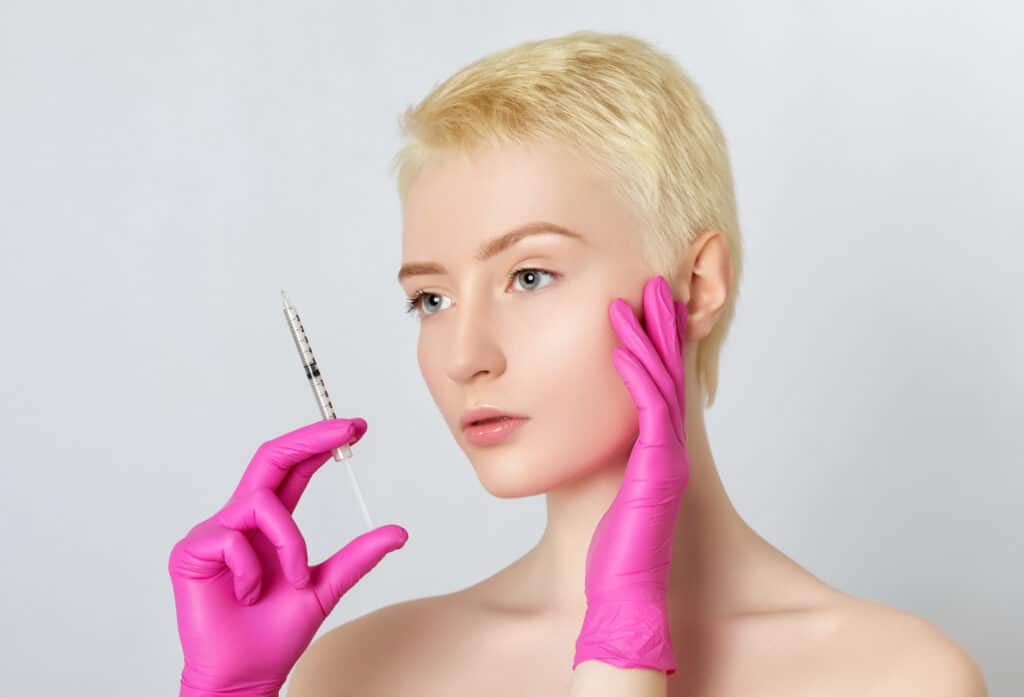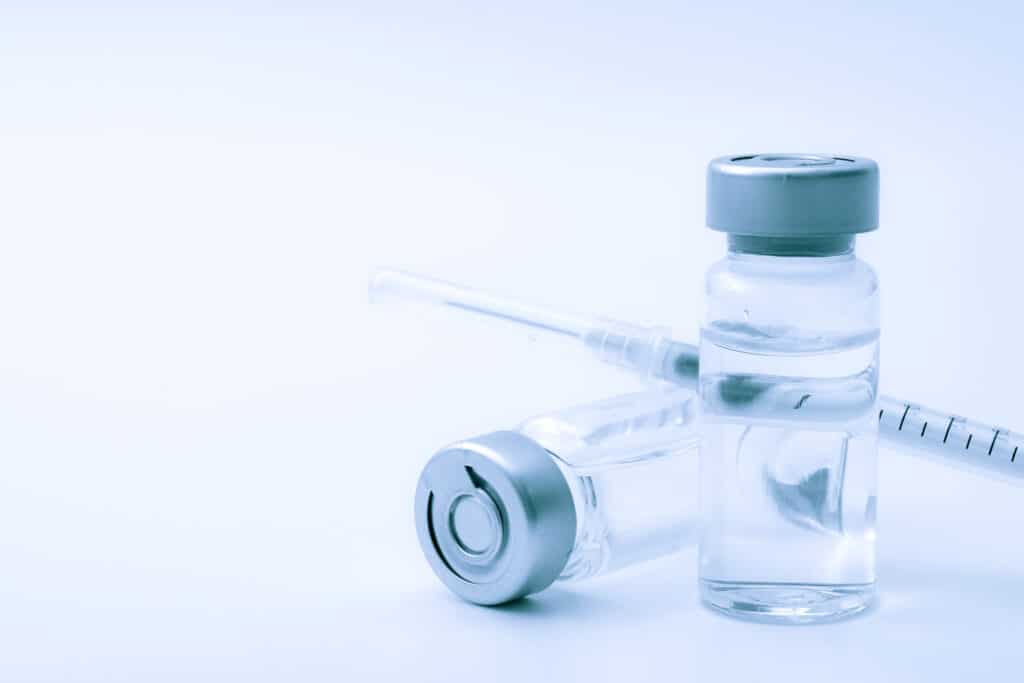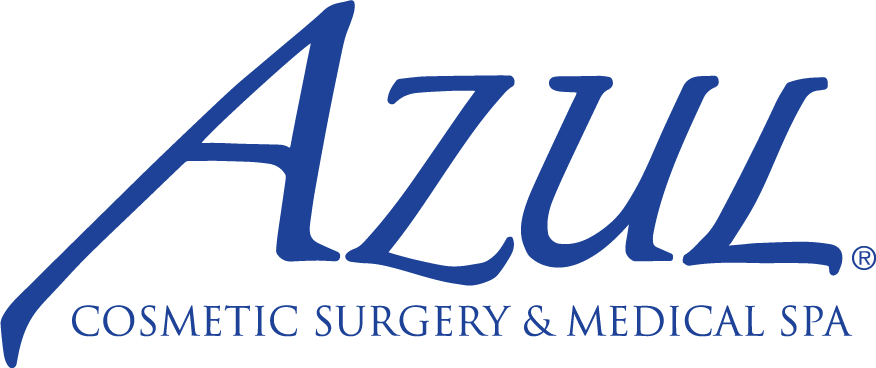Injectables
 At Azul Cosmetic Surgery and Medical Spa, we offer a variety of injectables: neuromodulators, dermal fillers, Kybella, and the Silhouette InstaLift (not technically an injectable, but we cover it here). Dr. Flaharty combines different injectables for his liquid facelifts, which are tailored to the unique needs of the patient.
At Azul Cosmetic Surgery and Medical Spa, we offer a variety of injectables: neuromodulators, dermal fillers, Kybella, and the Silhouette InstaLift (not technically an injectable, but we cover it here). Dr. Flaharty combines different injectables for his liquid facelifts, which are tailored to the unique needs of the patient.
You can click on each item in the list for more detailed information, but we’ll get into some overall information here.
What are Injectables?
At Azul, we’re proud of our diverse injectable offerings. Injectables are broken into categories. There are neuromodulators such as BOTOX. There are dermal fillers such as Juvéderm and Sculptra. We offer Kybella to shrink double chins. All of these products are injected. Dr. Flaharty combines various fillers and neuromodulators to provide a non-invasive, liquid facelift.
We also provide the Silhouette InstaLift. This procedure doesn’t use injections but instead places threads under the skin to lift the tissue. The body then absorbs the threads (made from the same material as dissolvable sutures) and boosts collagen production over time.
What is the Difference Between Dermal Fillers and Neuromodulators?
We have patients who lump dermal fillers and neuromodulators together, but they are actually completely different in how they work and where they work.
Dermal Fillers
Dermal fillers are true to their name. When injected beneath a wrinkle, crease, or area that has lost volume, they simply “fill” in space, pushing the skin back upward and erasing or thoroughly diminishing the crease or area of volume loss. Our numerous dermal filler options each target a specific area where volume loss has occurred.
Dermal fillers treat wrinkles known as “static wrinkles.” These wrinkles are caused by sun damage, declining collagen production, personal habits, and simple aging. Static wrinkles show themselves at all times and have nothing to do with muscle contractions. These are all static wrinkles: smile and laugh lines, marionette lines, parentheses lines, and barcode lines. These are areas of volume loss that dermal fillers treat: the cheeks, the under-eye areas, the lips, and the backs of the hands.
Dermal fillers are classified as either natural or synthetic. Natural fillers are made primarily from hyaluronic acid, a naturally occurring substance in the body whose job is to hydrate, plump, and firm the skin. Hyaluronic acid does this by binding with nearby water molecules. Synthetic fillers use man-made items such as calcium microspheres to add volume and structure under the skin.
Our natural dermal fillers:
- Juvéderm XC
- Juvéderm Voluma XC
- Juvéderm Ultra XC
- Juvéderm Volbella XC
- Juvéderm Vollure XC
- Restylane
Our synthetic dermal fillers:
- Radiesse
- Sculptra Aesthetic

Neuromodulators
Neuromodulators are made from the botulinum toxin type A. Back in the 1950s, it was discovered that when a minuscule amount of the toxin was injected into a muscle, it temporarily stopped the muscle from contracting. Botox was developed out of this research and was first approved by the FDA for the treatment of involuntary eyelid spasms. But it became famous in 2002 when the FDA approved Botox for use on the upper third of the face for wrinkle treatment.
When we make expressions such as frowning, squinting, showing surprise, and others, muscles around our eyes, between our eyebrows, and on our forehead engage. Over time these contractions begin to create wrinkles on the surface skin above the muscle. These wrinkles are known as “dynamic wrinkles.” These are crow’s feet next to the eyes, the 11s between the eyebrows, and forehead lines. When a neuromodulator is injected into the muscles that create these wrinkles, they block the nerve messages from the muscle to the brain. Since the brain doesn’t receive the message to contract the muscle it stays relaxed and the wrinkle on the surface skin doesn’t form. This lasts for a period of around four months. At that point, the muscle will begin to contract again, and the wrinkle will return. At that point, another injection session will maintain your results.
Our neuromodulators:
- BOTOX
- Dysport
- Xeomin
Interestingly, dermal fillers don’t work on dynamic wrinkles and neuromodulators don’t work on static wrinkles.

Are Injectables Safe? What are the Side Effects?
The FDA has approved all of the injectables we use at Azul Cosmetic Surgery and Medical Spa. To gain their approvals, each had to submit rigorous testing as to the effectiveness and safety of each product. Our injectables have been injected millions of times around the world, and they have proven to be safe and effective. That explains why Botox injections have been the single most performed cosmetic treatment, surgical or non-surgical, every year since it was first approved for cosmetic use in 2002.
The general side effects with any of these are slight redness and possible swelling at the injection sites. That typically passes in a few hours.
With dermal fillers, there is a slight chance of the formation of some lumps. If that happens, however, it’s easy to address. The injection of an enzyme, hyaluronidase, instantly neutralizes the hyaluronic acid in Juvéderm and Restylane, removing the lump or lumps.
The biggest risk with any of these injectables is with neuromodulators such as Botox. If they are injected into an incorrect muscle, this can cause issues such as a drooping eyelid. That’s why you never want to have Botox, Dysport, or Xeomin injected by someone in a nail salon or other sideline of the real business. Dr. Flaharty is a board-certified ophthalmologist who only focuses his practice on facial cosmetic surgery. That gives him the extensive knowledge of facial anatomy necessary for these injections.
With Kybella, the typical side effect is swelling. The amount of swelling a patient has is usually related to how much fat they have accumulated under their chin. This swelling resolves in a week or so for most patients, but it can linger for a period of a few weeks.
Are Injectables Painful?
Dr. Flaharty injects all of the neuromodulators with a tiny, very thin needle. Plus, they are not injected to great depth. This makes them easy to take; patients equate the feeling to that of a pinprick. Dermal fillers are injected a little more deeply, so topical numbing is usually applied prior to your injections.
Who is not a Candidate for Injectables?
There are few restrictions with any of these products. As mentioned above, dermal fillers are made primarily from hyaluronic acid, which occurs naturally in humans. That makes any reactions quite rare.
Really, the only people who would not be eligible for these treatments are those with active skin infections or conditions. Also, they are not intended for pregnant women.

